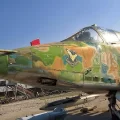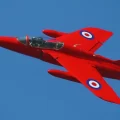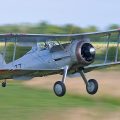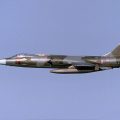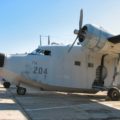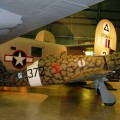
Junkers Ju 88 | |
|---|---|
| Državi | Nacistična Nemčija |
| Vlogo | Taktična – potop – torpedni bombnik – Noč – težki borec – Izvidniška letala |
| Prvi let | 21. december 1936 |
| Zgrajena | 15183 |
V Junkers Ju 88 je bilo nemško drugo svetovno vojno Luftwaffe dvomotorno multirolsko bojno letalo. Junkers Flugzeug- und Motorenwerke (JFM) je letalo sredi 30. let 20. Med razvojem in zgodnjimi operativnimi obdobji je trpela zaradi številnih tehničnih težav, vendar je postala eno najbolj vsestranskih bojnih letal vojne. Tako kot številni drugi bombniki Luftwaffe je služil kot bombnik, potopni bombnik, nočni borec, torpedni bombnik, izvidniška letala, težki borec in ob koncu vojne, kot leteča bomba.
| Junkers Ju 88D-1/Trop Walk Around | |
|---|---|
| Photographers | Vladimir Yakubov, John Heck |
| Localisation | National Museum of the USAF, Dayton |
| Photos | 107 |
Povezani kompleti:
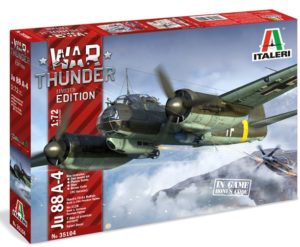
| Junkers Ju 88 R1 Walk Around | |
|---|---|
| Fotograf | Unknow |
| Lokalizacijo | Neznano |
| Fotografije | 39 |
Poiščite komplete na eBayu:
See also:
The Junkers Ju 88 was a versatile and widely used German bomber during World War II. It was designed in response to a request for a fast and unarmed bomber that could rely on its speed for defense. It had a crew of three or four and could carry up to 1000 kg of bombs at 500 km/h. The first prototype flew in December 1936 and exceeded the speed of contemporary fighters. However, the Ju 88 underwent several modifications and delays before entering service in 1939. It was initially intended to be a dive bomber, but it proved to be more effective as a level bomber, a night fighter, a reconnaissance aircraft, a torpedo bomber and an anti-tank aircraft. It also participated in the Mistel project, which involved attaching an unmanned Ju 88 with explosives to a fighter aircraft and using it as a guided missile. The Ju 88 was produced in various versions, such as the A, C, D, G, H and P models, each with different engines, armament, equipment and roles. The Ju 88 was one of the few German aircraft that remained in service throughout the war, with over 14,000 units built.
Views : 5345



